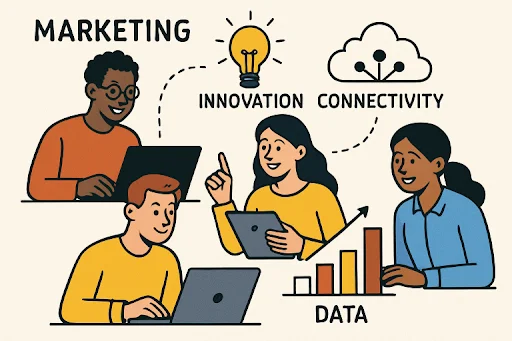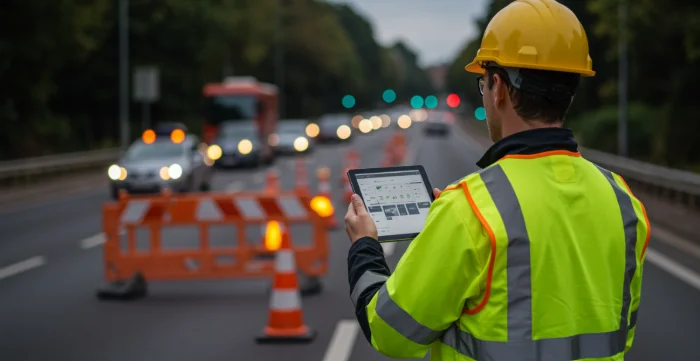Steps to the Digital Document Verification Process in 2024

The world today is extremely fast-paced, hyperconnected, and complex. With over 8 billion people residing, this complexity only increases. Combine such an era with digital technology and the result is uncertainty and security concerns. With this many people interacting with each other, it is essential to find a solution that helps offer transparency.
Every individual carries a set of documents with them throughout their lives. These documents help to authenticate their identities. For example, medical procedures, educational admissions, buying age-appropriate goods, etc. Since these documents originate from specific organizations, it becomes essential to verify them. The verification of documents allows a seamless management and systematic organization of persons involved with any entity.
The document verification process plays a critical role in the various aspects of our lives.
From opening up a new bank account to applying for a job or leasing an apartment, verifying identity documents is essential . This goes for individuals, organizations, and governments alike
Up until late, the document verification process was a complex maze. Thus, the navigation of this maze can be difficult to manage for individuals who are working around it. Furthermore, the technologies working behind the document verification process are constantly evolving and this significantly affects the user interfaces, back-end management, and data storage among other tasks. Despite being such a dynamic service, the core processes remain the same. To understand the intricacies of the document verification process, we must simplify and grasp these core series of steps.
Types of Documents and Verification Needs
There are various types of specific documents, and verification methods. Each type of document, or purpose of verification, demands a specific document verification process. These vary depending on the context.
Common types of documents of identity include passports, driver’s licenses, national ID cards, and birth certificates, etc. Each is issued at a different stage of life or after passing a certain nationally regulated test.
However, educational certificates, employment records, and financial documents are also examples of documents that often go through document verification processes. The level of scrutiny involved in the verification process depends on the sensitivity of the transaction as well as the potential risks. For example, to verify documents online for a high-value financial transaction or company we will have to enforce stricter measures in comparison to renting a bicycle.
Understanding The Traditional Document Verification Process
The traditional approach of the document verification process involves the client physically presenting the original documents to the authority representative. While online verification of documents is in practice more today, the traditional document verification process is still in use in some sectors. When dealing with sensitive documents or tricky situations in which online verification lacks the necessary infrastructure, we may go traditional.
For example, in retail stores, the salesperson has to check the ID of individuals buying alcoholic beverages to confirm their age. Many times, for alcoholic products, as well as other sensitive products, the stores also record the identity information of the buyer. During such in-person verification, the representative visually inspects the document for signs of forgery or tampering. They may then or may not compare it to a reference copy. While time-tested and secure, this method can be inconvenient and time-consuming, particularly for individuals far from verification centers.
Unlock the potential of business verification with our comprehensive guide – A Strategic Guide to Business Verification. Dive deep into effective strategies and best practices to ensure your business stays ahead in today’s dynamic market landscape.
Online Document Verification Process And Solutions
Thanks to the rise of digital technologies, today the online document verification process exists as a convenient and efficient alternative to non-digital routes . These solutions make use of novel technologies, such as the likes of document scanning, optical character recognition OCR, and ML or machine learning algorithms.
This supplementation of the traditional process with modern technologies allows the automation of the document verification process. Individuals can now just upload clean digitals of their documents via online portals. Once the data is in the system, it verifies the authenticity of the documents. After this, it extracts all relevant information thanks to OCR and converts image text into machine-readable format to then read it. The information is then compared against previously stored data, or information on other databases such as police watchlists, or no-fly lists.
Additionally, liveness checks via the use of webcams or video calls also help to prevent fraudulent document presentations. For example, the face on a driver’s license may be compared to a live selfie video to be submitted by the user.
Discover the Power of Real-time Insurance Eligibility Verification: Streamline Your Workflow Today!
Conclusion
The online verification process comes with many advantages. From high speed, efficiency, accessibility, and low costs, it is key to making the digital world a safe place.
However, it is crucial to consider its limitations as well.
Not all persons and documents are eligible for online verification. Certain regulations might demand in-person verification for specific scenarios. Similarly, concerns regarding data privacy and security must be addressed by going for reputable platforms with robust security measures.
Despite all these issues, the document authentication landscape continues to evolve rapidly and is driven by advancements in technology. As artificial intelligence and blockchain technology evolve and mature, we can expect increasing automation and security measures.
Furthermore, regulatory frameworks are adopting stringent data privacy regulations, which is also influencing our understanding of how to verify documents. Staying up-to-date about these trends can help individuals and organizations navigate the dynamic world of the document verification process with confidence.

How Professional Book Publishing Services Help Authors Reach More Readers

Strategic Marketing Solutions for Modern Businesses

How Traffic Management Businesses Are Improving Field Accountability

How BRSR Reporting Software Is Transforming Corporate Sustainability Reporting In India

Discover Stylish Plastic Disposable Plates for Family Dining

How Professional Book Publishing Services Help Authors Reach More Readers

Strategic Marketing Solutions for Modern Businesses

How Traffic Management Businesses Are Improving Field Accountability








